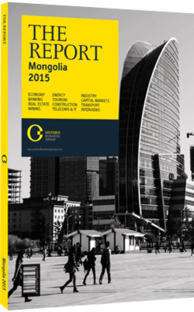New economic incentives in Mongolia could ease constraints on growth and boost small businesses
Accounting for 95% of all registered enterprises and around half of employment (910,000 workers), Mongolia’s 90,000 small and medium-sized enterprises (SMEs) are a crucial fabric linking large resource projects to the domestic economy. Indeed, the National Development and Innovation Committee estimates that every $1 invested in mining creates a $1.84 multiplier effect in other sectors like infrastructure, services and the impact of migration. However, SMEs account for just 25% of GDP, according to the International Finance Corporation, meaning that significant potential remains.
Government Support
The state has long sought to support SMEs. For example, the 2008 Comprehensive National Development Strategy aims to promote import-substituting SMEs through the new SME Agency, which provides both training and soft loans through business incubation centres serving 15 start-ups a year. The SME Agency is also extending some MNT19.5bn ($11.7m) in subsidised loans to 37 companies (chosen from 600) in 2014. In parallel, the newly-formed Development Bank of Mongolia channelled some MNT48.4bn ($29m) to 311 SMEs in the two years to mid-2014.
In 2009 the government exempted SMEs from Customs duties and value-added tax (VAT) on imports of spare parts and equipment for two years in a move that was subsequently extended to the end of 2016. Additionally, focusing increasingly on supply-chain integration, a local content law in 2011 required state-owned enterprises to prioritise SMEs in their procurement. However, smaller firms have struggled to meet demand given their capacity constraints.
The government’s three-year SME development programme to 2016, approved in 2013, aims to expand tax incentives and develop new financing instruments like leasing. In late June 2014, the Cabinet forwarded proposals to parliament aimed at refunding 90% of corporate tax for firms with under MNT1.5bn ($900,000) in turnover, outside of the telecoms, oil, mining, finance, alcohol and beverages sectors. This followed on a January 2014 proposal to amend the 1998 VAT law to raise the threshold for exempt firms from annual turnover of MNT10m ($6000) to MNT50m ($30,000), thereby exempting most SMEs. If enacted by parliament, the income-tax rebate would affect 40,000 firms, or 45.3% of all corporate taxpayers.
Technical Assistance
Although Mongolia made improvements in the business environment for SMEs by removing the minimum threshold required for loans to be included in its credit information database, only 13.3% of registered enterprises were covered by the credit registry as of 2013. Mongolia’s ranking in terms of access to credit in the World Bank’s “Doing Business” report slid from 55th in 2014 to 61st in 2015.
Support from development finance institutions has focused on training and improvements in market mechanisms, alongside concessional loans. The European Bank for Reconstruction and Development (EBRD) has earmarked a total of €3.8m for its five-year programme in partnership with the SME Agency, with the lion’s share dedicated to developing leasing and other financial products. Collaborating with the EU and the UN Commission on International Trade Law, the EBRD is also funding the government’s new e-procurement system, which will facilitate SMEs’ bidding for public tenders. It is also funding programmes by the Mongolian Banking and Finance Academy to train local bankers in SME-lending best practice, with over 1000 enrolled in 2014.
Lending
Access to credit remains a key constraint on SMEs, as they can often provide only minimal transparency to lenders. Only 10% of registered firms had access to bank credit in 2013, according to the Asian Development Bank. Alternatively though, non-bank financial institutions (NBFIs) provide services to 60% of SMEs, but outstanding loans reached just MNT320bn ($192m) and total assets were equivalent to 2% of bank assets in 2013, according to the Mongolian NBFI Association.
Building domestic SME supply chains will be key to increasing the economic multipliers of future mining projects. However, improvements to credit access and the business climate will be needed to reach potential.
You have reached the limit of premium articles you can view for free.
Choose from the options below to purchase print or digital editions of our Reports. You can also purchase a website subscription giving you unlimited access to all of our Reports online for 12 months.
If you have already purchased this Report or have a website subscription, please login to continue.

